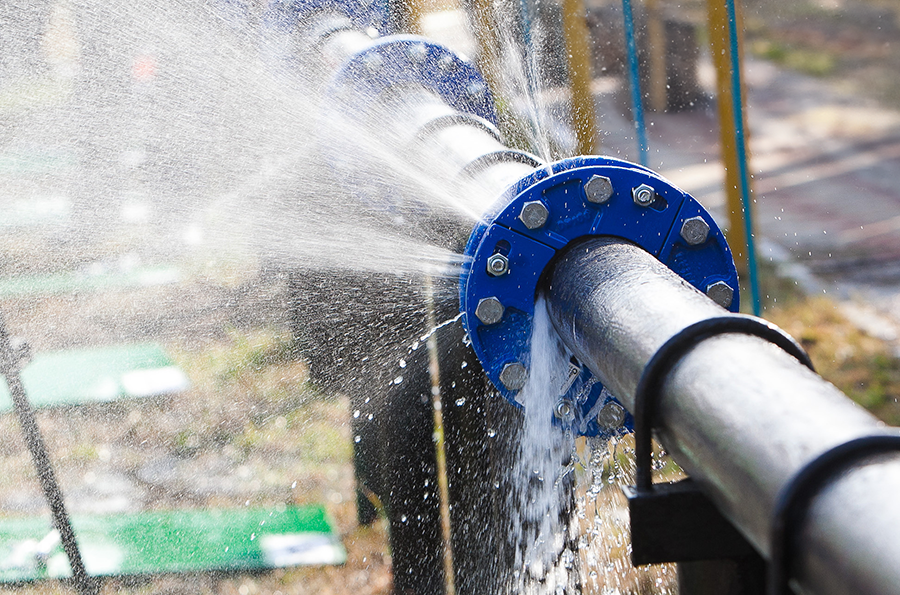Across the U.S., booster stations and pumping stations are feeling the strain of both age and increased demand. As pumping stations edge near full capacity, financial or real estate constraints can make it difficult to expand or retrofit them.
One solution that many water utilities are turning to is early detection of water loss, which consumes precious pumping capacity. But detecting leaks comes with its own costs and challenges. Full-bore magnetic flow meters (mag meters), the standby technology used by many utilities, are expensive and require long straight runs of pipes, which are not always available around pumping stations.
Thankfully, an accurate and cost-effective alternative to full-bore meters exists. Full-profile insertion (FPI) mag meters can be purchased and installed at a fraction of the price of full-bore meters while providing the data needed for early detection of leaks.
Metering Pumping Stations To Detect Leaks
Every gallon of non-revenue water (NRW) requires booster and pumping stations to push additional water into the system to compensate for the loss. In addition to the cost of losing this water, leaks pose a challenge for those systems where pumping station capacity is already nearing its limit and/or where populations are growing more rapidly than current projections.
Repairing leaks is, theoretically, the easiest way to increase pumping station capacity. But fixing leaks requires knowing when and where they occur. Unfortunately, much of the U.S.’s infrastructure was built during a time when water was considered cheap and abundant. As such, the vast majority of metering and flow measurement takes place at endpoints. That makes it difficult to assess where in the distribution network a leak is occurring.
Today most utilities understand that the weakest points in a distribution system are often near pumping stations. Pumping stations, by their nature, put additional stress on the pipes in order to push clean water through the system. By installing meters at pumping stations, water utilities can use flow data to detect leaks early on. For example, if an uncharacteristic increase in output occurs near a pumping station that doesn’t match typical diurnal patterns, that could be indicative of a leak. Utilities can confirm this by comparing pumping station output with consumption levels at endpoints in that part of the network. If the amount of water pumped is greater than the amount of water consumed by ratepayers, this confirms the start of a leak in that area.
Bypassing Metering Costs
Not every water utility is enthusiastic about installing meters at pumping stations. After all, when most utility managers think of metering, they think of full-bore mag meters. There’s a good reason for that: mag meters are a trusted technology that is reliable and accurate. However, installation can be costly. In addition to the price of the meters themselves, installation requires shutting down parts of the distribution network. Pipes then need to be cut and the meter welded into place. In addition, a bypass arrangement is usually needed, which requires more valves and more pipework.
A
full-profile insertion (FPI) mag meter is a cost-effective alternative to full-bore mag meters. They have excellent accuracy, ±0.5%, which makes them suitable for detecting even seemingly small flow changes. In addition, they offer a range of significant benefits over full-bore meters, such as:
- No system shutdown required. FPI meters can be hot-tapped into place, which allows them to be installed under full pressure without shutting off customer water supply.
- Simpler installation. The hot-tap installation takes around two hours per meter and requires far less welding and cutting than full-bore meters.
- Easy maintenance/replacement. Because they are hot-tapped into place, FPI meters can be easily removed for basic maintenance. If a meter needs to be replaced, it can be quickly pulled out and a new one slipped into its place without any welding or cutting.
- No need for straight runs. Full-bore mag meters often need to be installed after several feet of straight pipe to minimize turbulence, which can lead to inaccurate readings. FPI mag meters have multiple sensors that reach across the full diameter of the pipe. This allows them to take accurate readings, including near valves and bends (Figure 1).
- Long service life. FPI mag meters have no moving parts, which means not only do they require less maintenance, but they also have a long lifespan — approximately 30 years.
We had a customer that needed a more accurate flow measurement in the pumping station before the takeoff after the S-bends. However, the station had limited pipe room and no ability to shut down the pumps. Using a
full-profile insertion (FPI) mag meter, the customer was able to choose a location that gave as much upstream diameters as possible.
All of the above benefits, combined with the lower cost per meter, means water utilities can enjoy significant savings with FPI meters over full-bore mag meters. In general, most save around 40% on installation and lifetime ownership costs. This makes metering pumping and booster stations more affordable, which in turn allows water utilities to more easily detect leaks, save money, and increase pumping capacity.
Talk to one of our experts today at
(855) 737-4716, or fill out our
online form to learn more.
